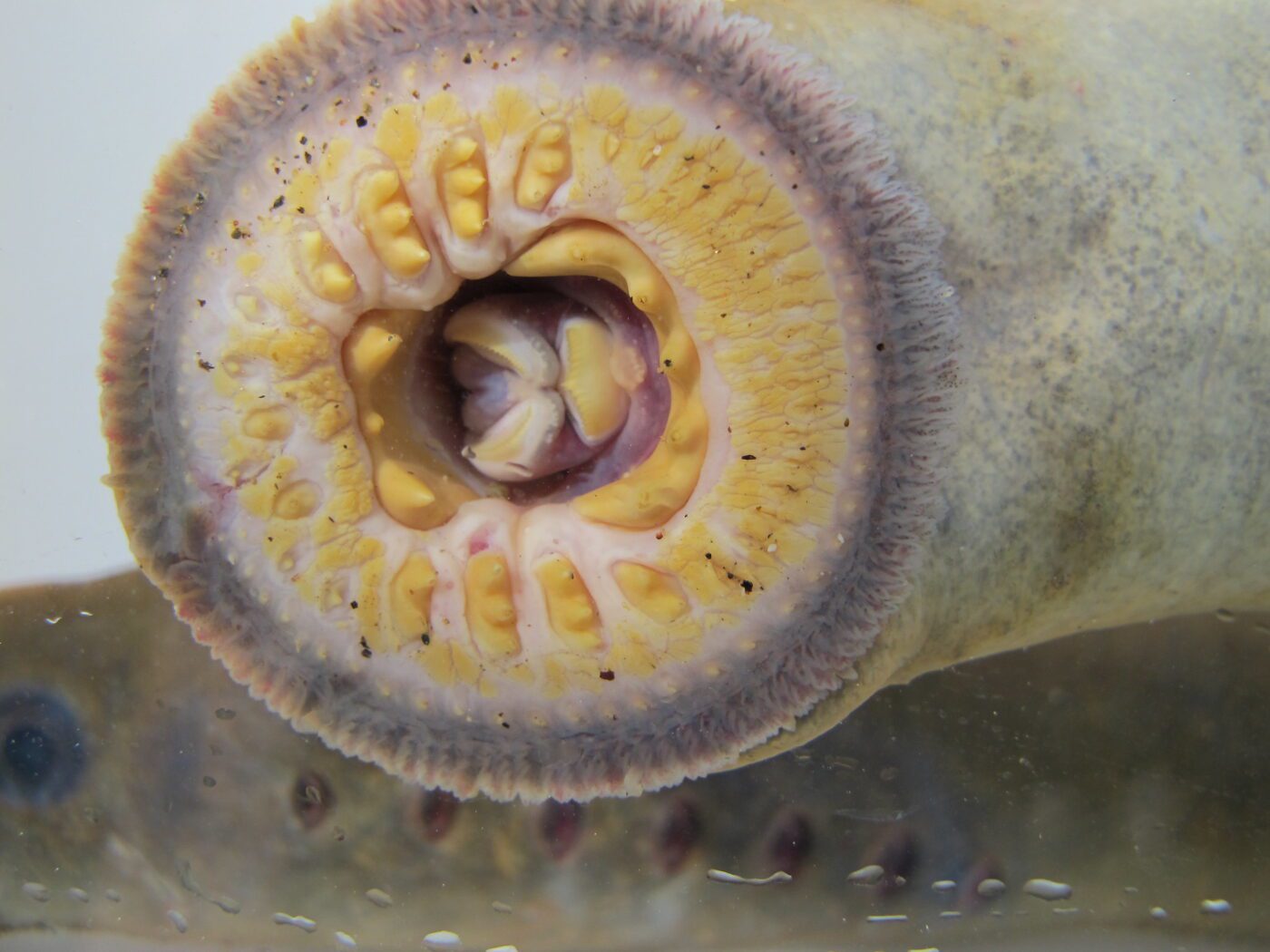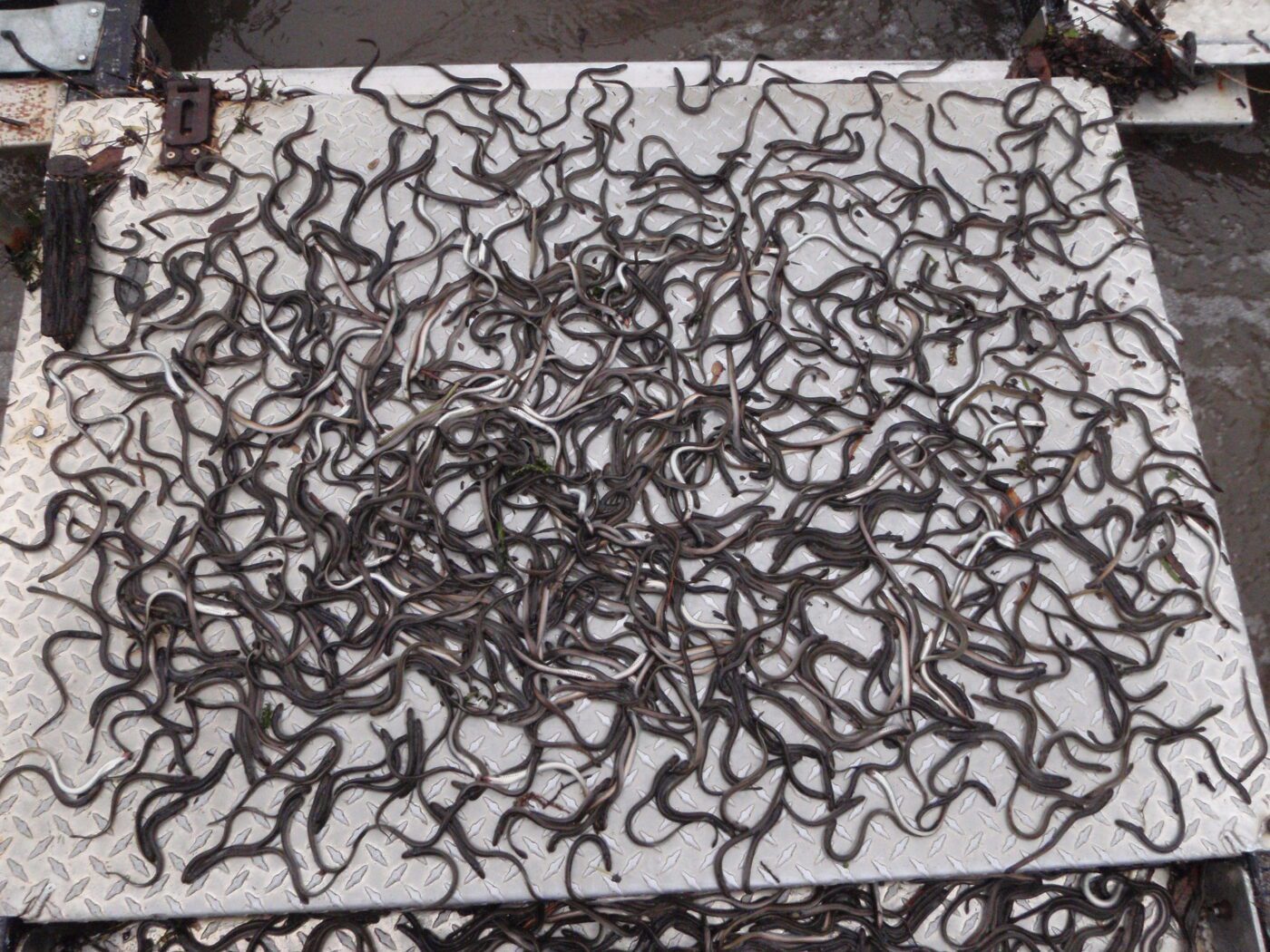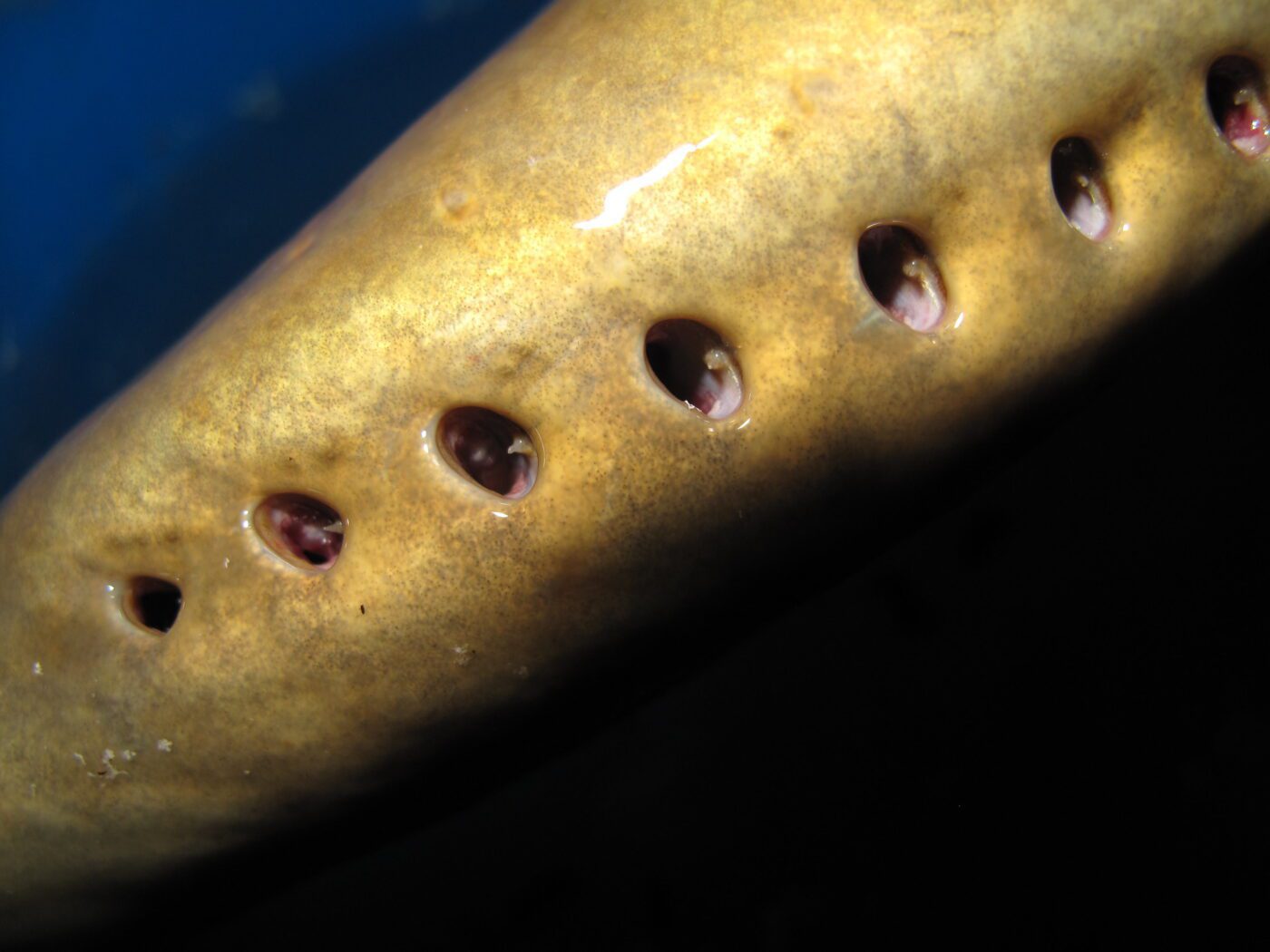Monday April 15, 2024

The Pacific coast is well known for its anadromous salmon and steelhead, but there is a far more ancient group of unique migratory fishes that are also found in this region. These ancient, and sometimes nightmare-inducing fish, are known as lampreys. Lamprey are often dubbed “living fossils,” as they have existed for over 360 million years with very limited evolution. They are part of a prehistoric group of fish called “agnathans” which translates to “jawless.” Because they do not have jaws, lamprey are easily identified by their circular, tooth-lined mouth parts known as oral discs. Many lamprey are parasitic and will use these oral discs to latch onto other fish and feed off of their blood. Before entering adulthood, juvenile lamprey go through a prolonged larval phase – which can last from three to nine years depending on the species – during which they filter feed on microorganisms until their eyes and oral discs develop. The adult life stage can be diverse across different species of lamprey, especially in terms of migratory (anadromous or freshwater resident) and feeding behavior (parasitic or non-parasitic).

Lamprey have suction-cup-like mouths and a mouthful of intimidating teeth.
Lamprey face many of the same threats as salmonids due to habitat fragmentation as a result of extreme drought and the construction of dams. This fragmentation creates barriers to both adult and juvenile survival, as migratory pathways and spawning habitat become challenging or impossible to access. Currently, 25% of all remaining lamprey species are at risk of extinction. In California, there are currently eight recognized species of lamprey, and while little is known about the lineages and biodiversity of these populations, native lamprey play important ecological and cultural roles. During their juvenile stage, they help to improve water quality by filtering and cycling nutrients back into the ecosystem. As adults, they can be an important source of food for humans, especially for Indigenous groups along the Pacific Coast that have long shouldered the responsibility for monitoring and managing lamprey species in their regions. Understanding the extent of lamprey biodiversity in California can help in the development of updated management and monitoring strategies for these unique fish. A recent study shed light on these mysterious fish by using a genetic approach known as DNA barcoding, ultimately revealing greater diversity in California lamprey species than was previously recognized (Auringer et al. 2023).

Juvenile lamprey (ammocetes) can be very abundant in California rivers and are an important source of food for predatory fish. These juveniles were captured in a rotary screw trap on the Stanislaus River.
The authors of the study used fin-clip tissue samples collected by research collaborators – including FISHBIO – from lamprey of 19 different sites across the San Francisco Estuary, and the Sacramento, San Joaquin and Klamath River basins from 2018-2020. They specifically chose these sampling areas due to the suspicion that adult lampreys may spawn in the Sacramento and San Joaquin Rivers and their associated tributaries. Lampreys are also common throughout the Lower Klamath River basin, and anadromous Pacific Lampreys have been identified in the upper Klamath River basin. DNA was extracted from the collected fin clips and a gene known as cytochrome b was sequenced for each individual. Cytochrome b is a gene located in the mitochondria of a cell, and examining variation in the gene’s sequence can be a useful tool for telling species apart from one another. In fact, this very gene has been previously useful in identifying lamprey species. After DNA sequencing results were processed, the output sequences were compared to known lamprey species in the National Center for Biotechnology Information database to confirm species identities. The authors use these results to develop a phylogenetic analysis – essentially building a family tree – to trace the origins and relationships of California lampreys over time.

Adult lamprey in a fish passage at Bonneville Dam.
Their results showed a deep divide between two genera (or groups) of lampreys in California, Entosphenus and Lampetra. They found that there were distinct and genetically different lineages within the Lampetra genus, and distinct but genetically similar lineages within the Entosphenus genus. The authors were also able to identify more lineages that should be described as new species. It was initially thought that three of the eight lamprey species in California were in the genus Lampetra, and that five belonged to the genus Entosphenus. However, after the genetic analyses, they determined that there are at least seven possible species within Lampetra. Two of these lineages came from the Napa River and Alameda Creek, both streams that flow into San Francisco Bay. This newfound diversity is an important breakthrough for lamprey conservation efforts along the Pacific Coast.

Lacking the gill flaps (operculum) that characterize bony fishes, Pacific lamprey instead have seven round gill openings along each side of their body.
The results of this study demonstrate the need for further research into lamprey species diversity in California. Monitoring strategies should also consider and incorporate these novel lineages in future management strategies to preserve lamprey biodiversity in California and foster resilience of these incredible living fossils.
Header Image: A juvenile Pacific lamprey.
This post was featured in our weekly e-newsletter, the Fish Report. You can subscribe to the Fish Report here.
